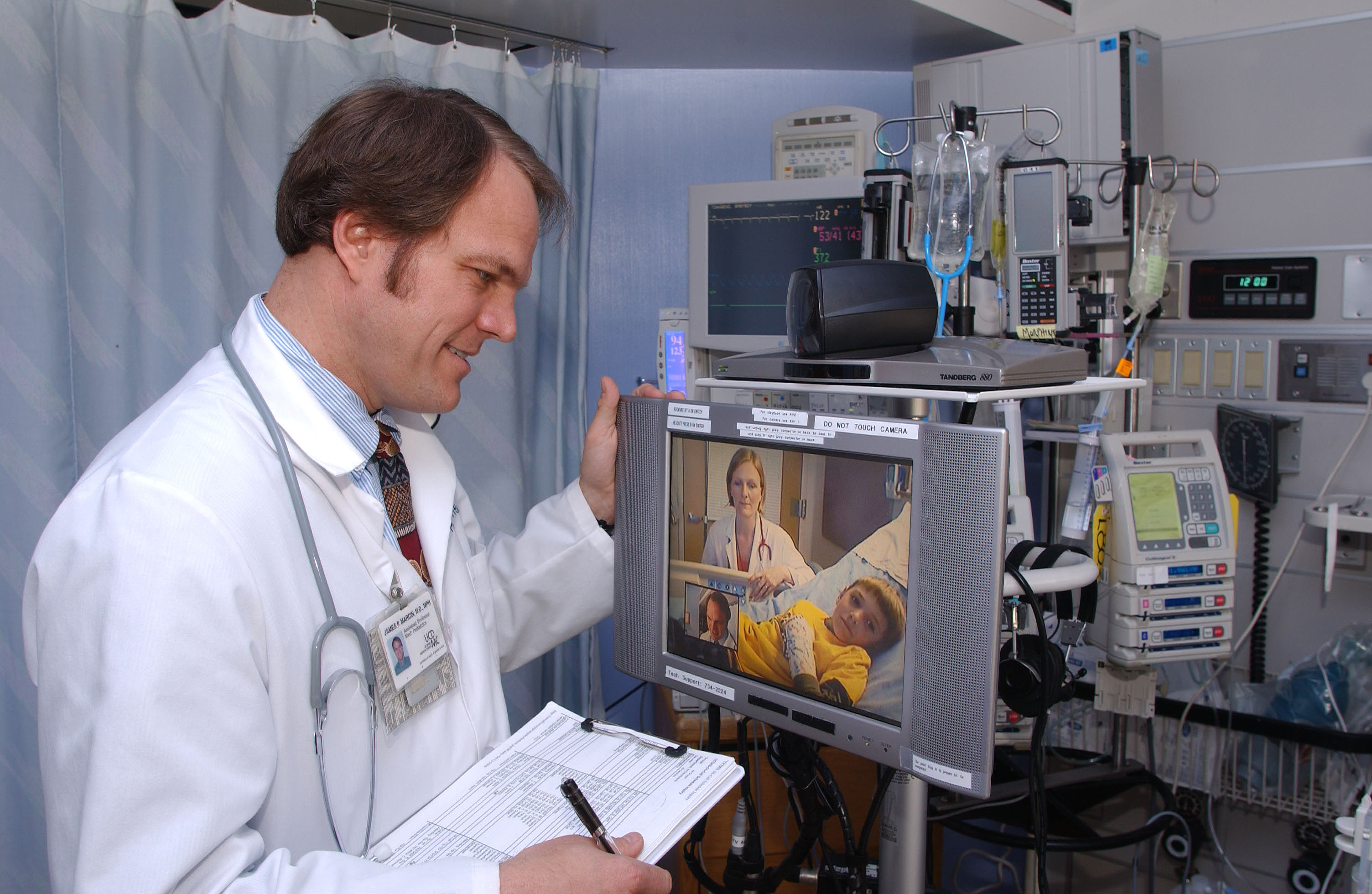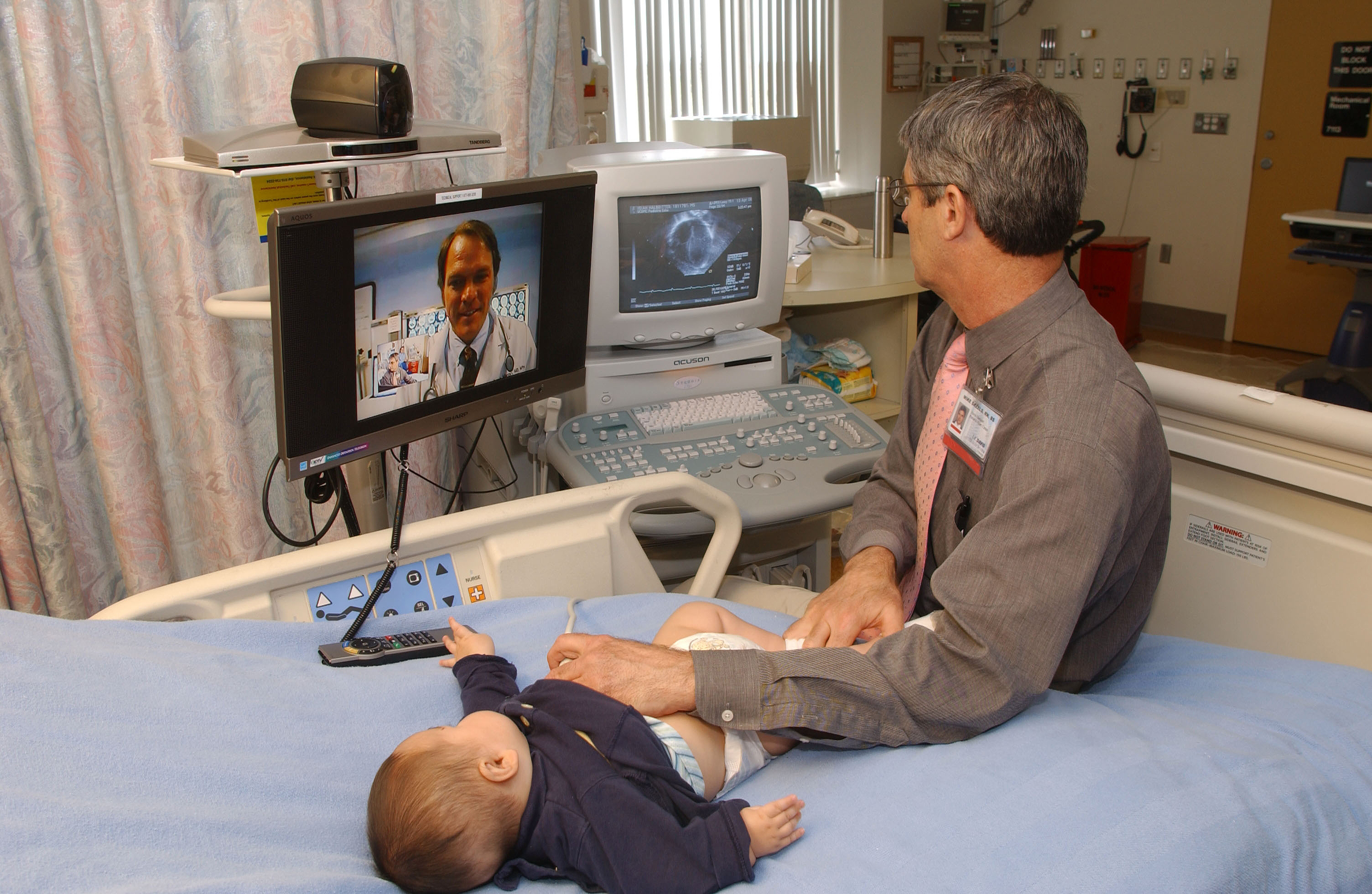Improvement
HRSA's Health IT Grantee Spotlight
“UC Davis Children’s Hospital Uses Telehealth to Provide Critical Care to Children Rural Hospitals”

The Health Resources and Services Administration’s (HRSA) Office of Health Information Technology and Quality is pleased to highlight the great work of the University of California, Davis Children’s Hospital (UCDCH) for its efforts in the advancement of telemedicine. UCDCH has several years of experience in using telemedicine to improve access to emergency care for children treated in rural and/or underserved hospitals in Northern California. UCDCH and has also pioneered new technological applications to telecardiology.
Access to Pediatric Specialty Care in Rural Environments
Currently, there is a disparity in the access to health care services between rural and urban areas, especially as it relates to care for critically ill or injured children. For example, even though 21 percent of children in the United States reside in rural areas1, only 3 percent of board certified pediatric intensivists practice in these areas2,3.
The regionalization of medical services has resulted in hospitals that specialize in the treatment of certain conditions, which has improved the quality of care and outcomes for these conditions. The regionalization of some services (e.g. trauma) is commonly based on the medical center’s patient volume for a particular condition. Since acute trauma occurs less frequently in children, the appropriate regionalization of pediatric trauma services is often difficult. This is especially true for rural counties4, where it may not be feasible to establish a pediatric designated trauma center.
Acutely ill and injured children in rural communities are often cared for at medical centers that primarily treat adults. Although these centers may meet National and state standards to provide care for children, they may be underserved with respect to the care of pediatric specific conditions. Rural hospitals may lack appropriate pediatric equipment or support personnel, or may be unable to obtain sub-specialty pediatric consultations (e.g., pediatric critical care specialist). Without access to appropriately trained staff, sick or injured children may receive incomplete or inaccurate examinations, face unnecessary admission or transfer (to a facility hundreds of miles from their community), and receive less than ideal care, putting them at risk for inadequate treatment and the development of complications.
Although children do not experience life-threatening illnesses frequently, these illnesses generally have a high potential for morbidity and mortality when they do occur. With limited opportunities to gain experience in the management of these emergencies, rural providers may have a greater need for urgent assistance from pediatric critical care medicine specialists. Telemedicine offers a mechanism through which underserved, rural health care facilities may obtain access to the valuable support of subspecialists . Although telemedicine has been increasingly used to allow rural and underserved hospitals to communicate with pediatric specialty physicians, these consultations have generally been non-urgent, and scheduled in advance. UC Davis Children’s Hospital was one of the first programs to initiate the use of telemedicine to provide emergency, trauma, and critical care consultations for pediatric patients in rural communities.
About UC Davis Children’s Hospital and its Telemedicine Program
The UC Davis Medical Center/Children’s Hospital is Northern California’s only Emergency Medical Services (EMS) designated level I trauma center for both adult and pediatric patients. UCDCH pediatric critical care physicians have established a telemedicine network which provides consultations for pediatric patients in rural Emergency Departments (ED) and adult ICUs, where staff have limited experience caring for critically ill children. Some of these rural hospitals also serve communities designated by HRSA as medically underserved areas or serving medically underserved populations. The telemedicine program has allowed non-urban physicians (e.g. trauma surgeons, neurosurgeons, and adult intensivists) to access pediatric critical care consultations for their patients.
The program is available 24 hours per day, 7 days per week and is activated when a physician from a participating hospital calls a toll free telephone number. The UCDCH pediatric critical care physician is paged and a telemedicine consultation is typically initiated within 5 minutes. Each consultation is characterized by a live, interactive, two-way audiovisual dialogue between the UCDCH pediatric critical care physician, the remote hospital’s physician, bedside ICU nurse, ICU respiratory therapist, and (when possible) the patient’s parent/guardian.. The UCDCH physician is able to review the child’s history, vital signs, laboratory results, radiographs, monitoring, and therapeutic devices (e.g., ventilator, invasive pressure monitoring), and perform a physical exam. Figure 1 shows an example of a teleconsultation.

Figure 1: An Example of a Teleconsultation
At the end of the consultation, a comprehensive note is written by the pediatric critical care physician and faxed to the rural hospital for inclusion in the patient’s medical record.
UCDCH’s Mission Under Their Grant From The Office for the Advancement of Telehealth
When the program first began 10 years ago, an award from the Agency for Healthcare Research and Quality allowed UCDCH to partner with three rural EDs to support the care of their pediatric patients. Subsequent funding from the California Healthcare Foundation and HRSA’s Emergency Medical Services for Children has allowed the program to expand its coverage to ten hospitals, with an additional three sites in the process of installing the necessary equipment to participate.
In 2010, UCDCH received an Office for the Advancement of Telehealth (OAT) grant which will allow them to expand the number of participating hospitals to approximately 20 sites. The work under this grant will focus on:
- Increasing access to pediatric critical care and emergency medicine specialists;
- Improving the quality of health care delivered;
- Ensuring appropriate disposition to children; and
- Enhancing the efficiency of the health care dollars spent in these EDs.
ICU and ED Consultations Via Videoconferencing Units
Each participating site uses a turnkey commercially available videoconferencing unit, which was initially connected to UCDCH by a T1 interface (1.54 GHz/sec). The video conferencing units can be encased in a plastic shell to make them less intimidating to children (Figure 2). Issues with the broadband connection (such as cost and vendor capability) eventually drove the decision to use the internet to transmit information between the sites. Some of the participating rural hospitals currently only possess DSL connections, but funding from the Federal Communications Commission and the California Telehealth Network has partially addressed this barrier. Using a Virtual Private Network (VPN), the secure internet connection provides an encrypted exchange of live, interactive audio and video. A portable telemedicine unit (which can be connected to each of the beds in the rural hospital’s ED or ICU) connects the requesting site to the UCDCH pediatric ICU. If the physician in the pediatric ICU is unavailable, several of the physicians have videoconferencing enabled PCs and laptops. UCDCH recently migrated to using High Definition systems, which allows higher clarity images to best visualize the patient’s injuries and physical exam findings.
Figure 2: Videoconferencing Unit Encased in a Plastic Shell
Telecardiology Consultations
The incidence of congenital heart disease, which requires intervention, among infants is about 3 per 1000 births5. A large proportion of these patients are born in rural and remote communities, where the necessary pediatric cardiology expertise is not available. Medical centers which lack experienced sonographers and pediatric cardiologists often encounter challenges to definitively rule out the existence of cardiac disease. This lack of expertise has most commonly been addressed by using store-and-forward echocardiography, where an adult sonographer records an echocardiogram in the nursery or neonatal intensive care unit (NICU) and the resulting videocassette is mailed to a pediatric cardiologist at a tertiary care center. However, this process may delay life-saving interventions.
Recent technological improvements have made it possible to rapidly transmit complete digital echocardiograms over high bandwidth connections. Now, a real-time telemedicine link allows a UCDCH cardiologist to view the images as the ultrasound is being performed (Figure 3) and guide the sonographer in the execution of any additional imaging studies that are required. Once the evaluation is complete, recommendations for medical care or transfer are made and communicated via the videoconference to both the pediatrician and the family of the newborn.
Figure 3: A Telecardiology Consultation
Conclusion
UCDCH has shown that it is both feasible and effective to provide pediatric subspecialty consultations for acutely ill and injured pediatric patients in EDs and ICUs that lack this expertise on-staff by establishing a telemedicine program which connects remote, underserved communities with a university children’s hospital and an EMS designated level I trauma center.
For more information on UCDCH’s telemedicine program, please contact Candace Sadorra, Pediatric Telemedicine Program Manager, at Candace.sadorra@ucdmc.ucdavis.edu.
1. Heath B, Salerno R, Hopkins A, et al: Pediatric Critical Care Telemedicine in Rural Underserved Emergency Departments. Pediatr Crit Care Med 2009; 10:588 –591.
2. Althouse L, Stockman J: The Future of Pediatric Education II Organizing Pediatric Education to Meet the Needs of Infants, Children, Adolescents, and Young Adults in the 21st Century. Pediatrics 2000; 105:163–212.
3. Stoddard J, Cull W, Jewett E, et al: Providing Pediatric Subspecialty Care a Workforce Analysis. Pediatrics 2000; 106:1325–1333.
4. Rogers FB, Shackford SR, Osler TM, et al: Rural Trauma: The Challenge for the Next Decade. J Trauma 1999; 47:802–821.
5. Huang T, Moon-Grady AJ, Traugott C, Marcin J: The Availability of Telecardiology Consultations and Transfer Patterns from a Remote Neonatal Intensive Care Unit. Journal of Telemedicine and Telecare 2008; 14:244–248.
Improving Reimbursement Through Effective Use of a Cloud Based Practice Management System
AAPCHO’s Enabling Services Accountability Project Use of Electronic Health Record Data
UC Davis Children’s Hospital Uses Telehealth to Provide Critical Care to Children Rural Hospitals
MCHB’s Effective Follow Up Initiative Grantees Using Health IT for New Born Screening Coordination
National Rural Health Resource Center Technical Assistance and Services Center




